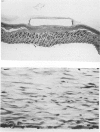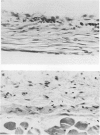Abstract
A disinfectant (2,4,4'-trichloro-2'-hydroxydiphenyl ether: Irgasan, Ciba-Geigy) was incorporated into plastic washers fabricated from ethylvinyl acetate (EVA), polyethylene, polypropylene or TPX. Plastics containing 0.2 and 2% Irgasan gave zones of inhibition on nutrient and blood agar plates seeded with micro-organisms (Staphylococcus aureus, Staph. epidermidis, Escherichia coli, Proteus mirabilis or Candida albicans) even after thorough washing. Exceptionally, C. albicans was inhibited only by 2% Irgasan, and EVA gave good inhibition only against the staphylococci. Similar washers of each plastic were implanted subcutaneously into the flanks of rabbits; before insertion each was washed, had thread woven into it and was surrounded by a plasma clot containing 2 X 10(8) Staph. aureus. All the plastics without Irgasan gave rise to abscesses, none of the plastics impregnated with 2% Irgasan did, though from 2 out of 12 sites small numbers of Staph. aureus were isolated at post mortem. Using either clinical or bacteriological criteria, the results were highly significant (P less than 0.00001 and P less than 0.001 respectively), demonstrating the effectiveness of this technique in preventing plastic-associated infection.
Full text
PDF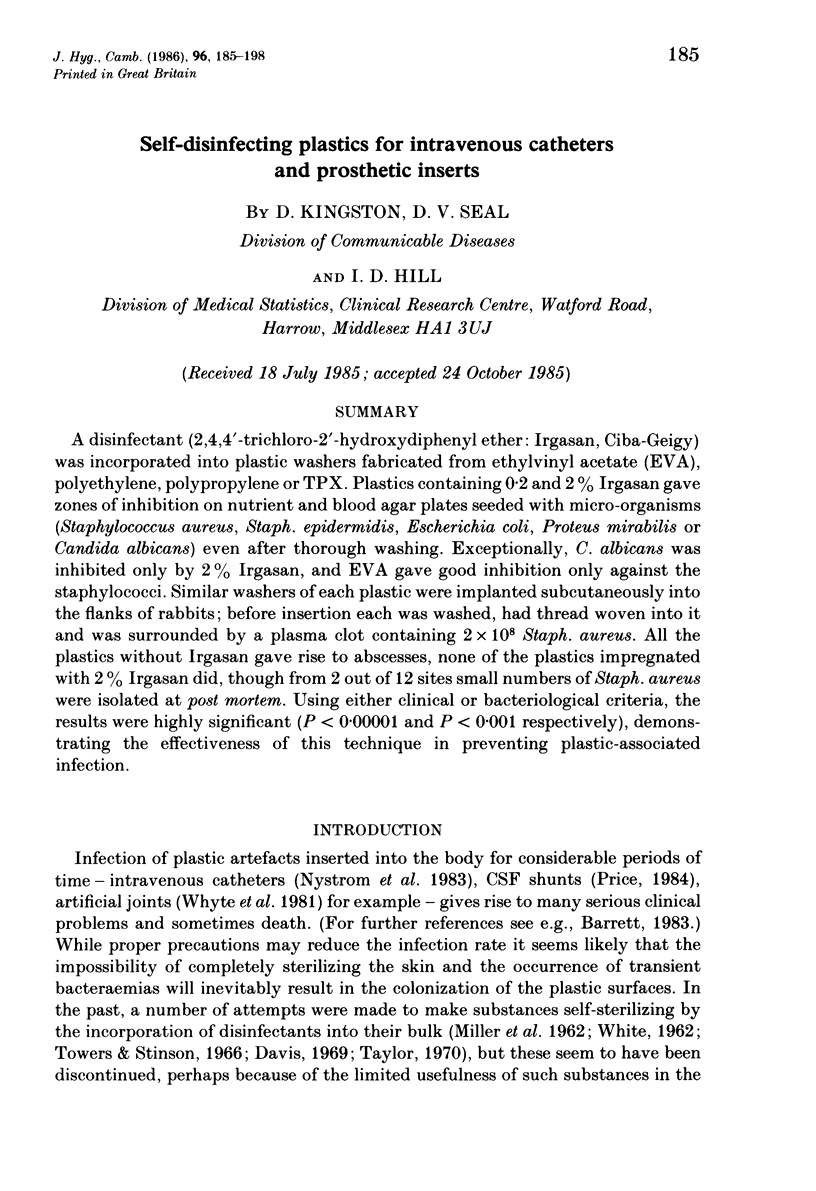
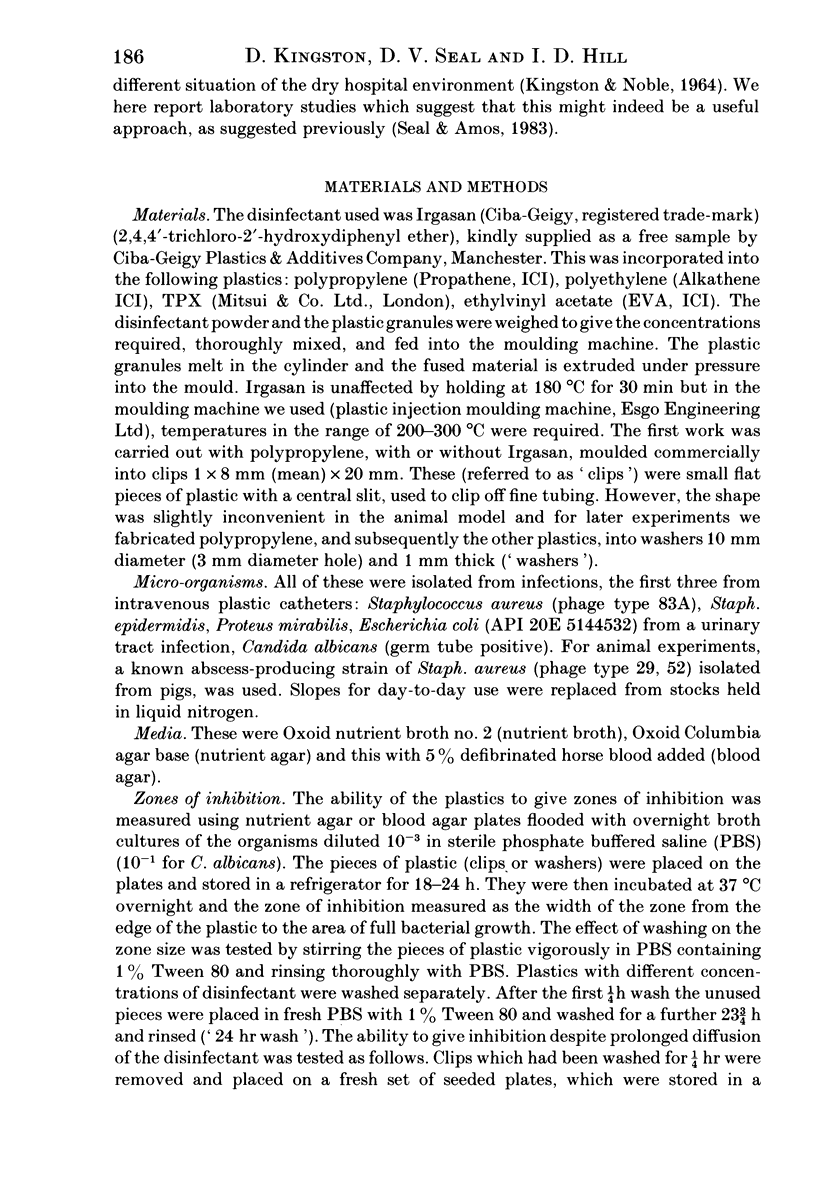
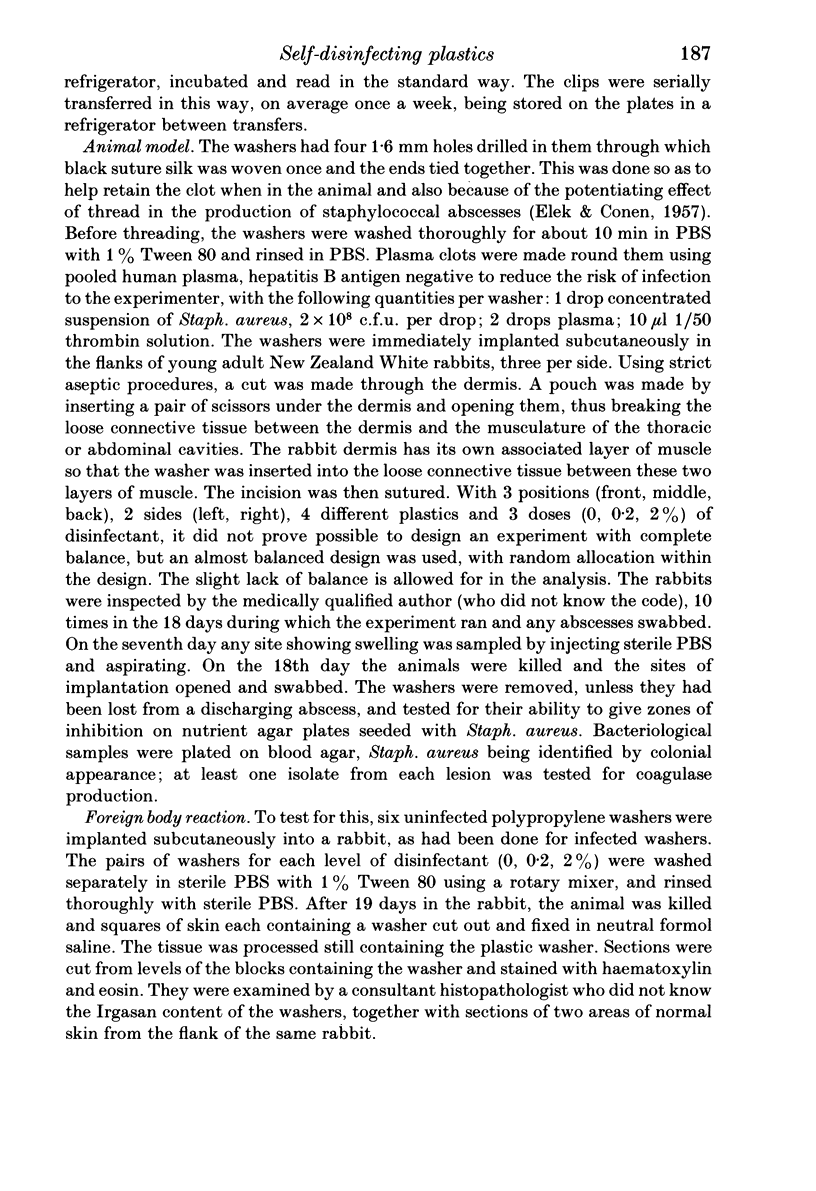
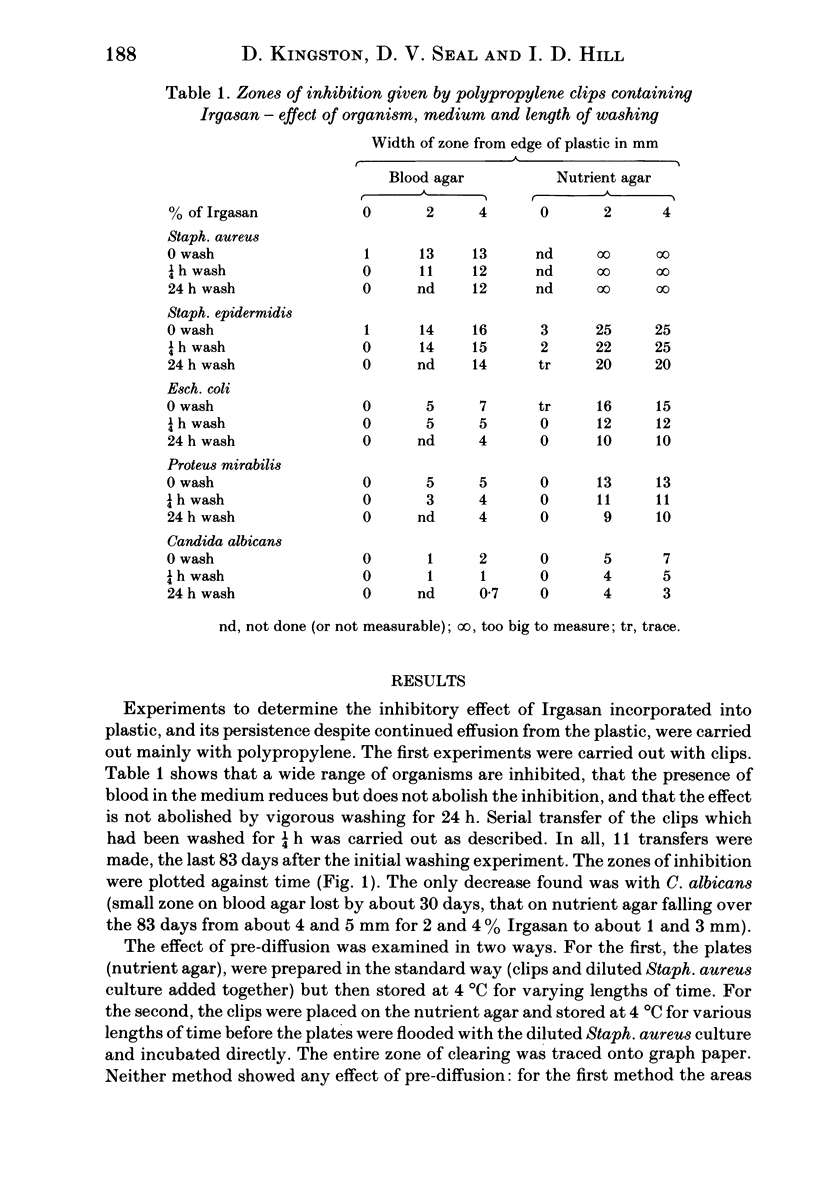
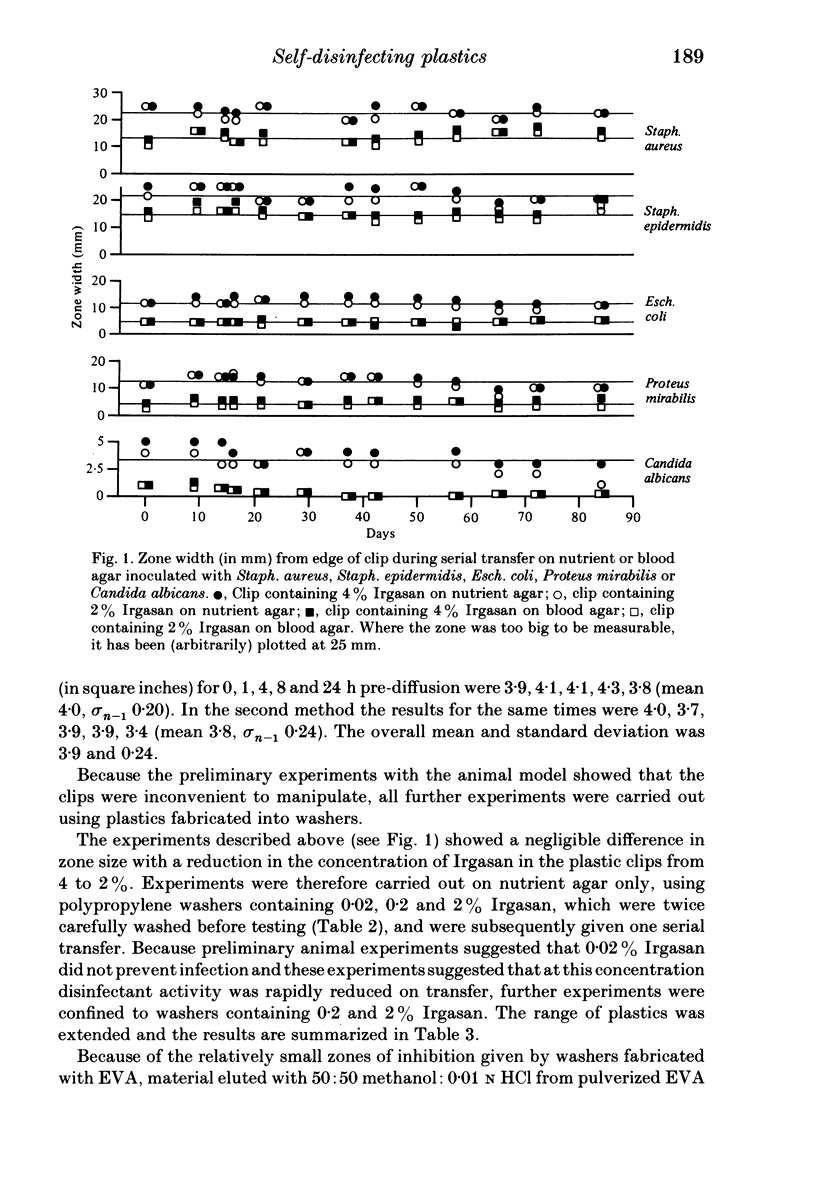
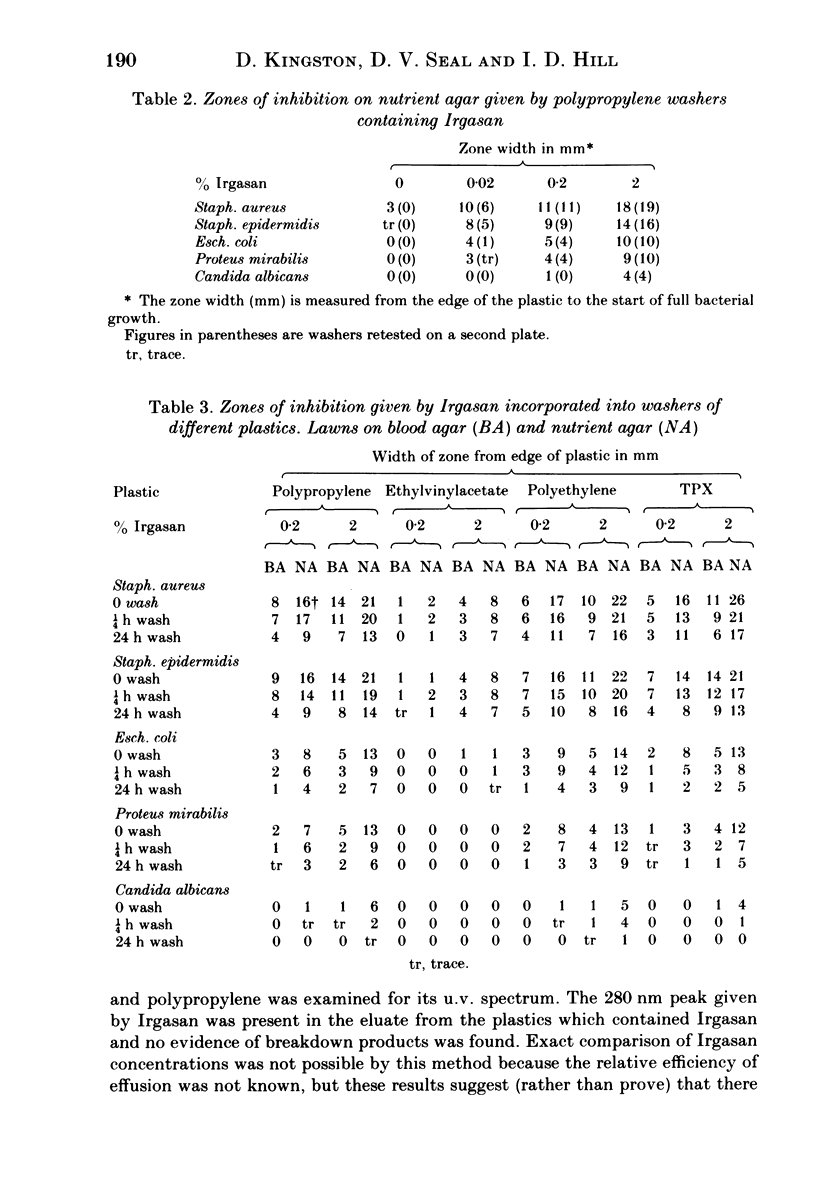
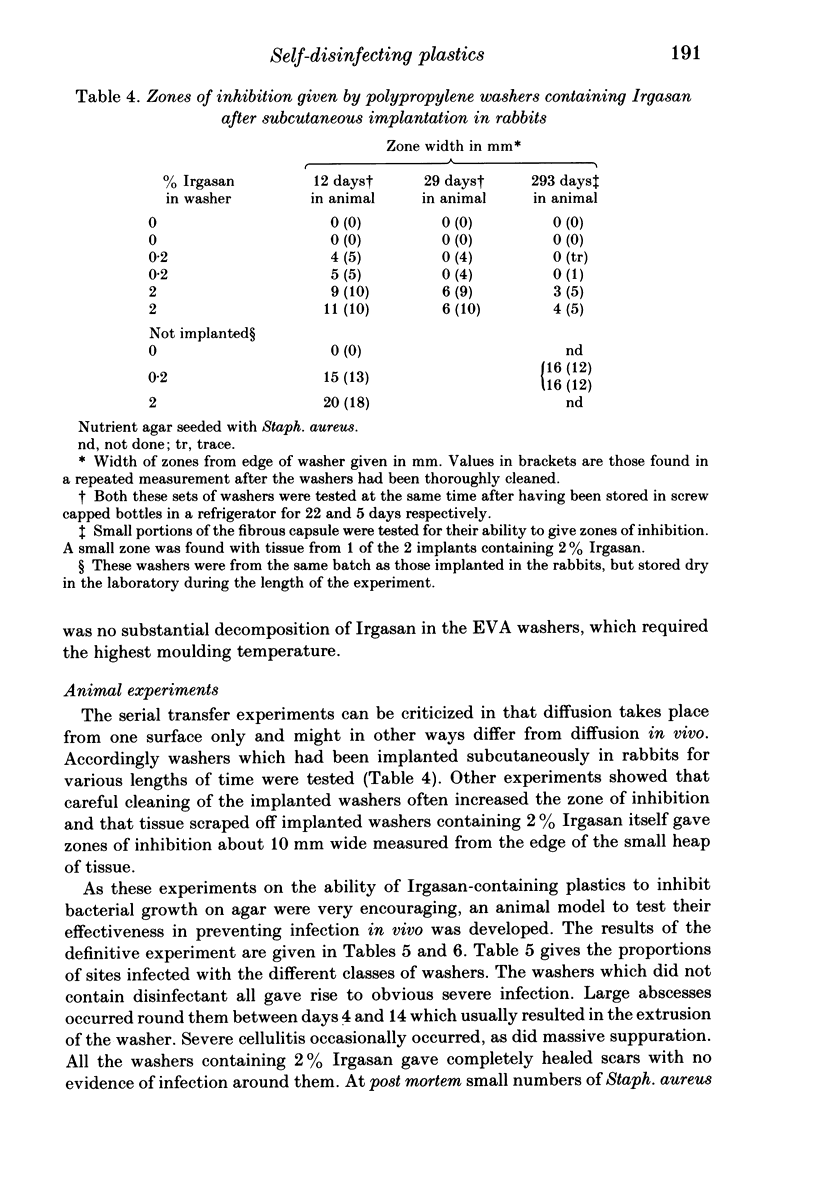
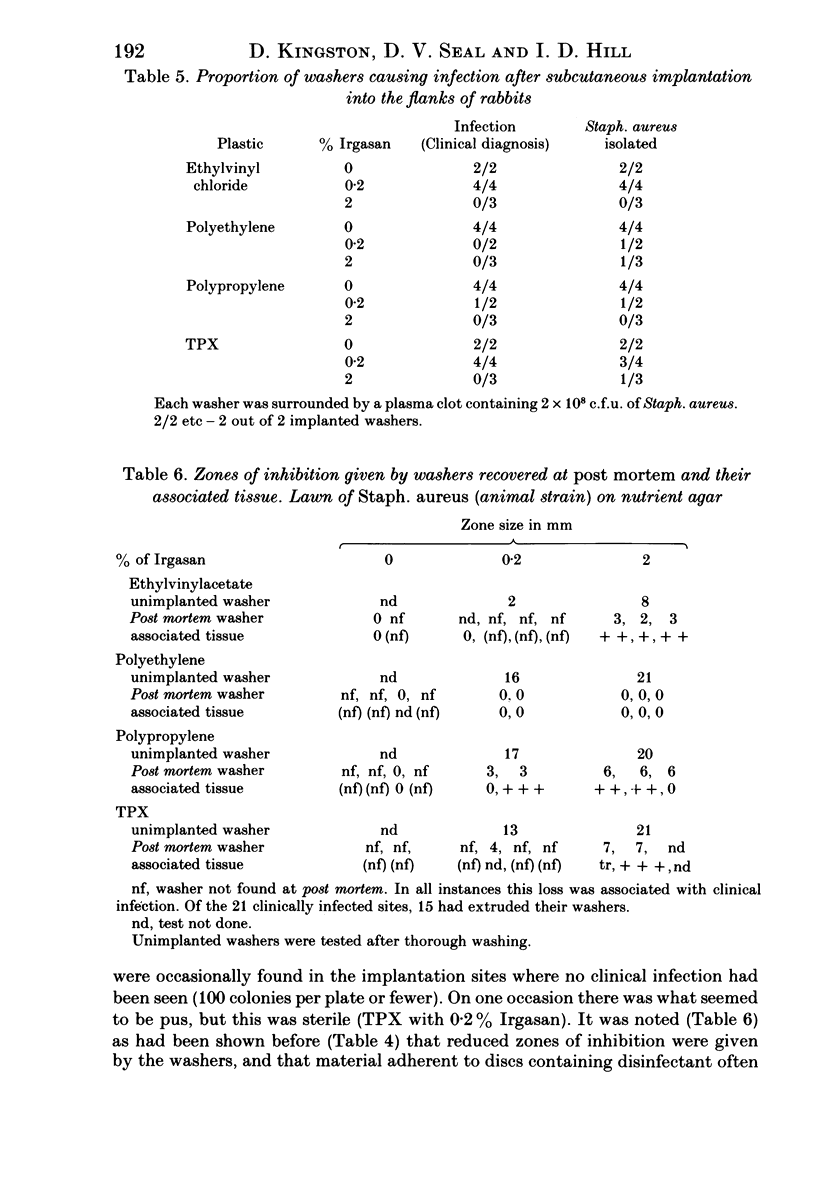
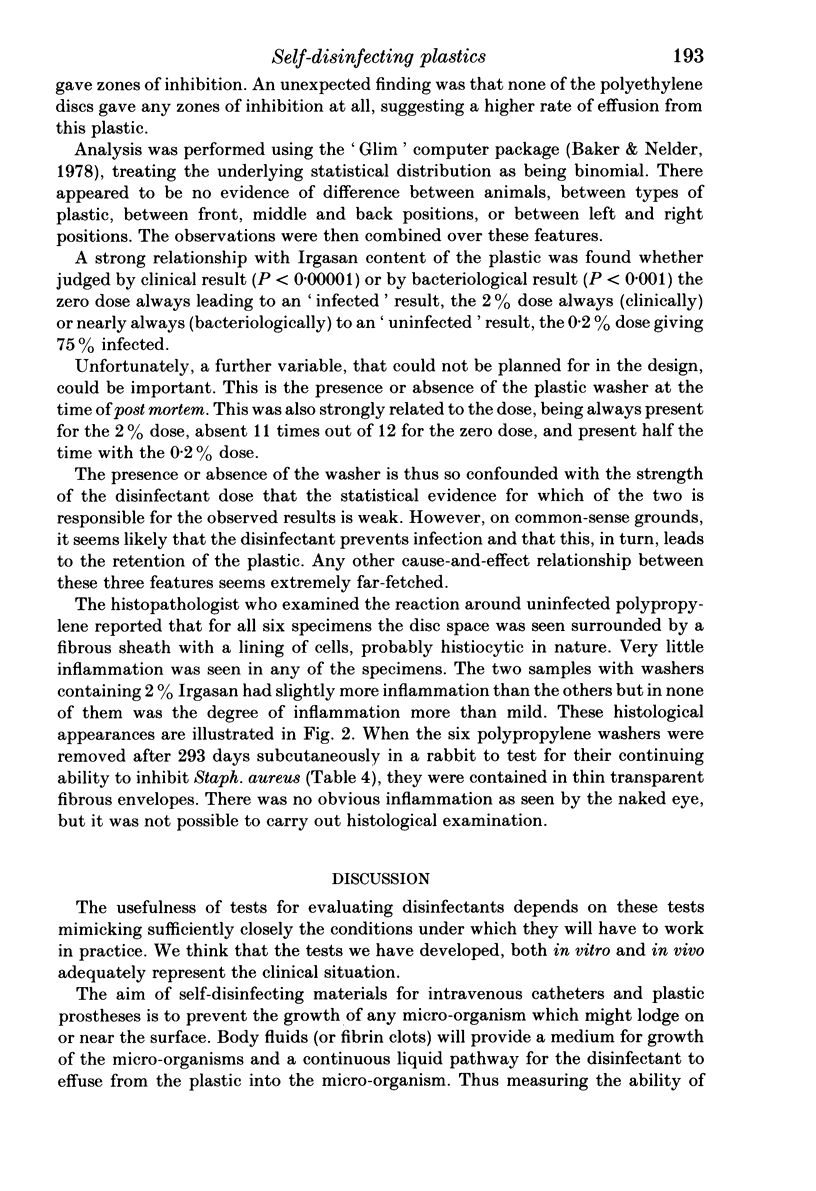
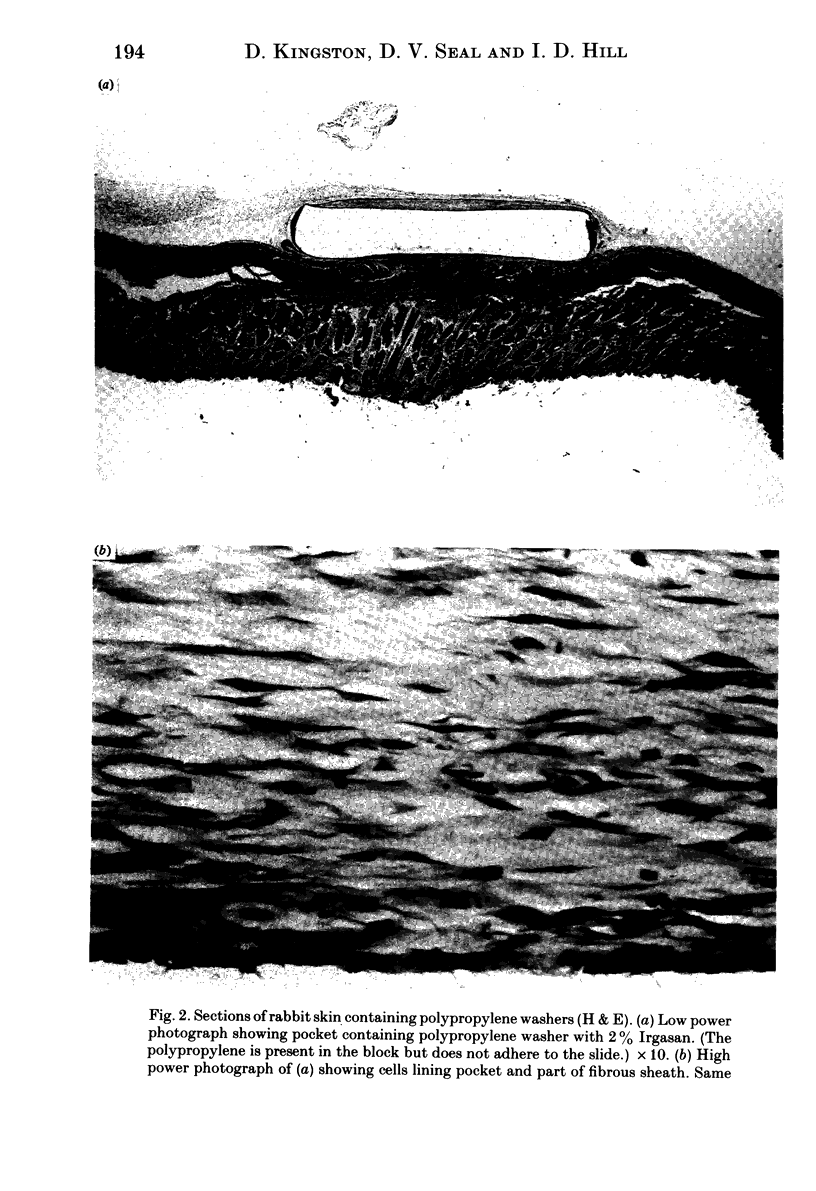
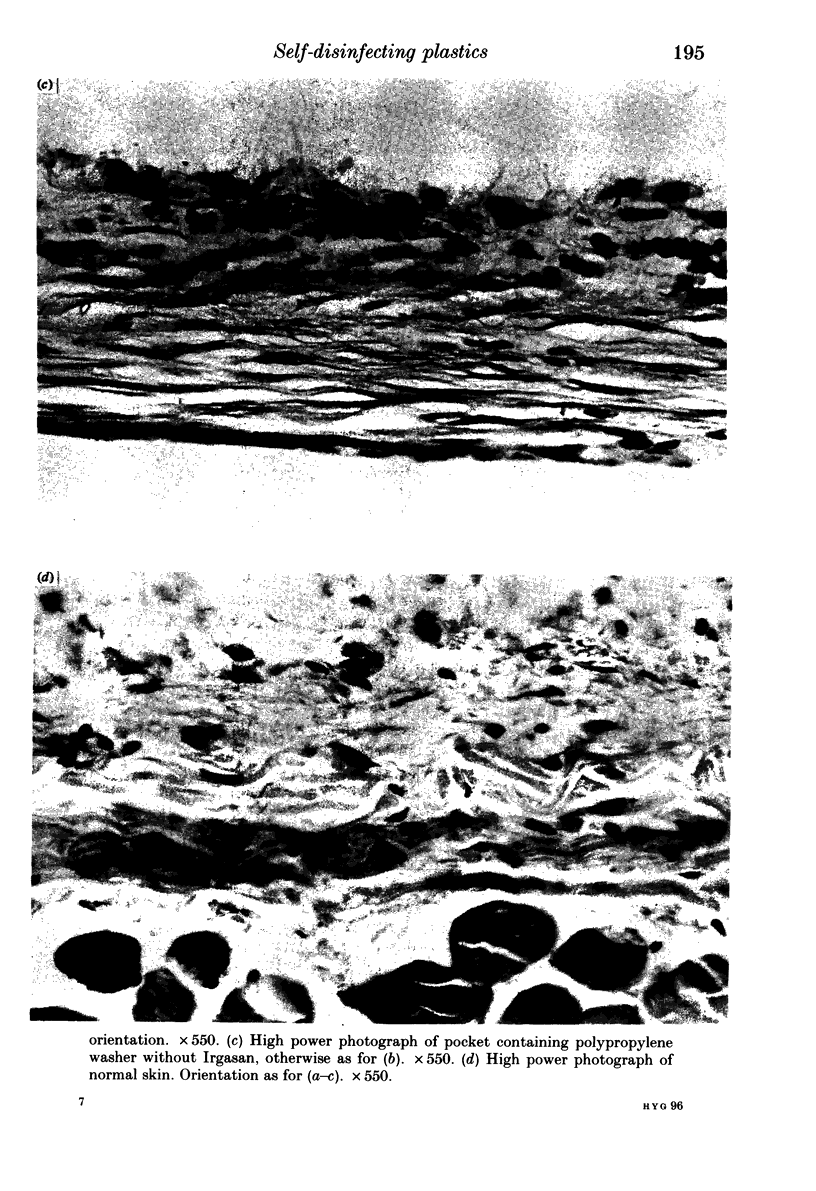
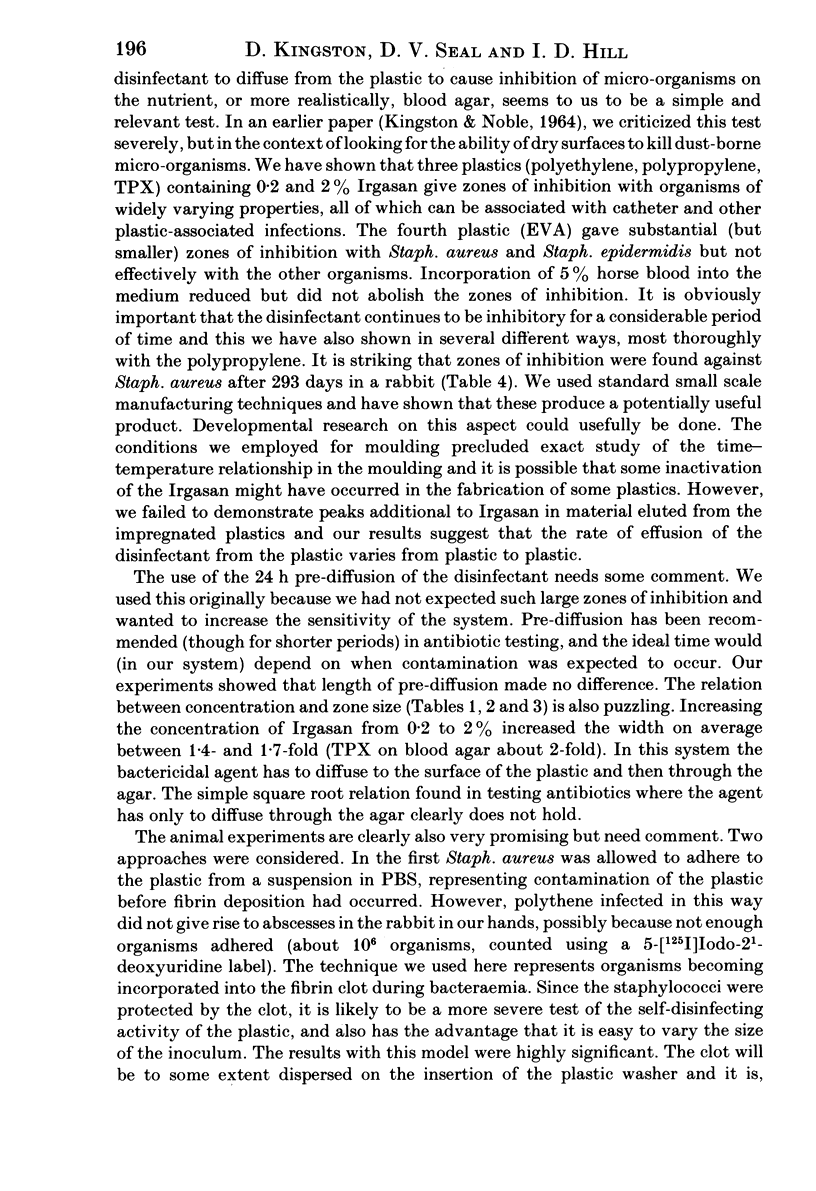
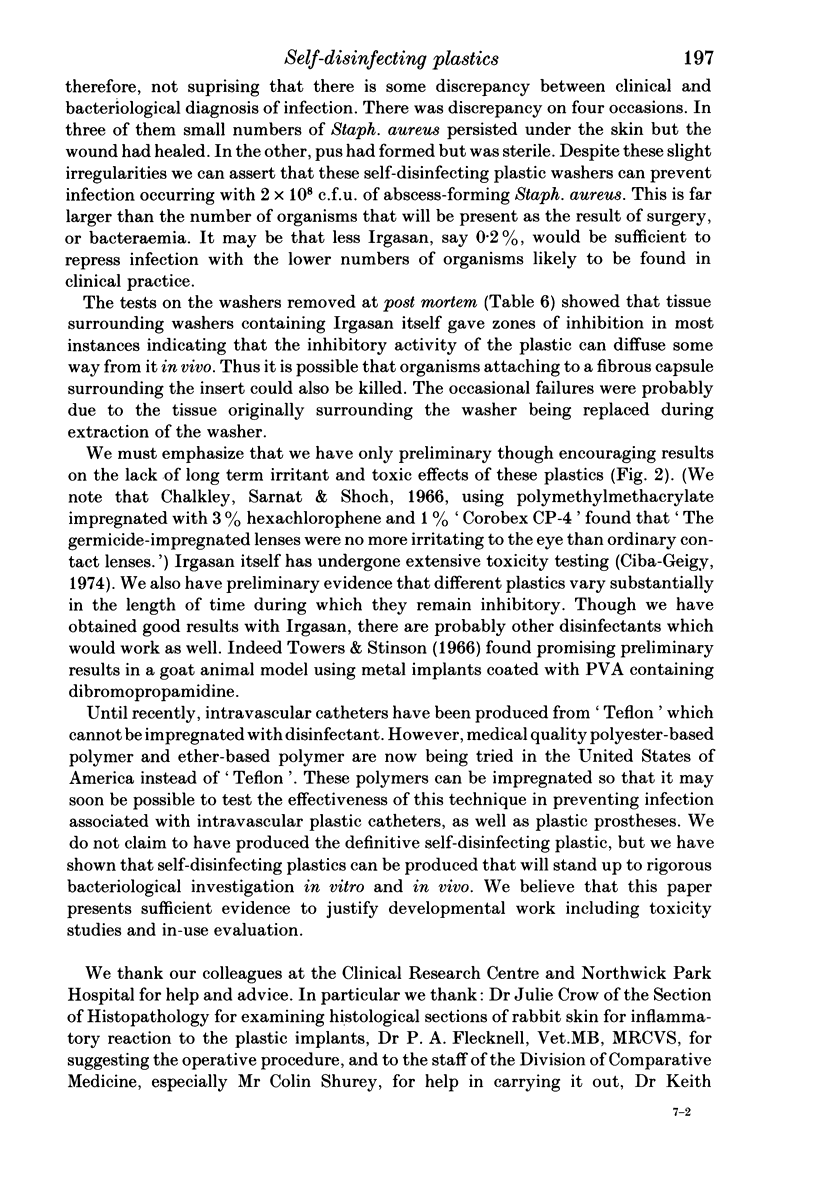
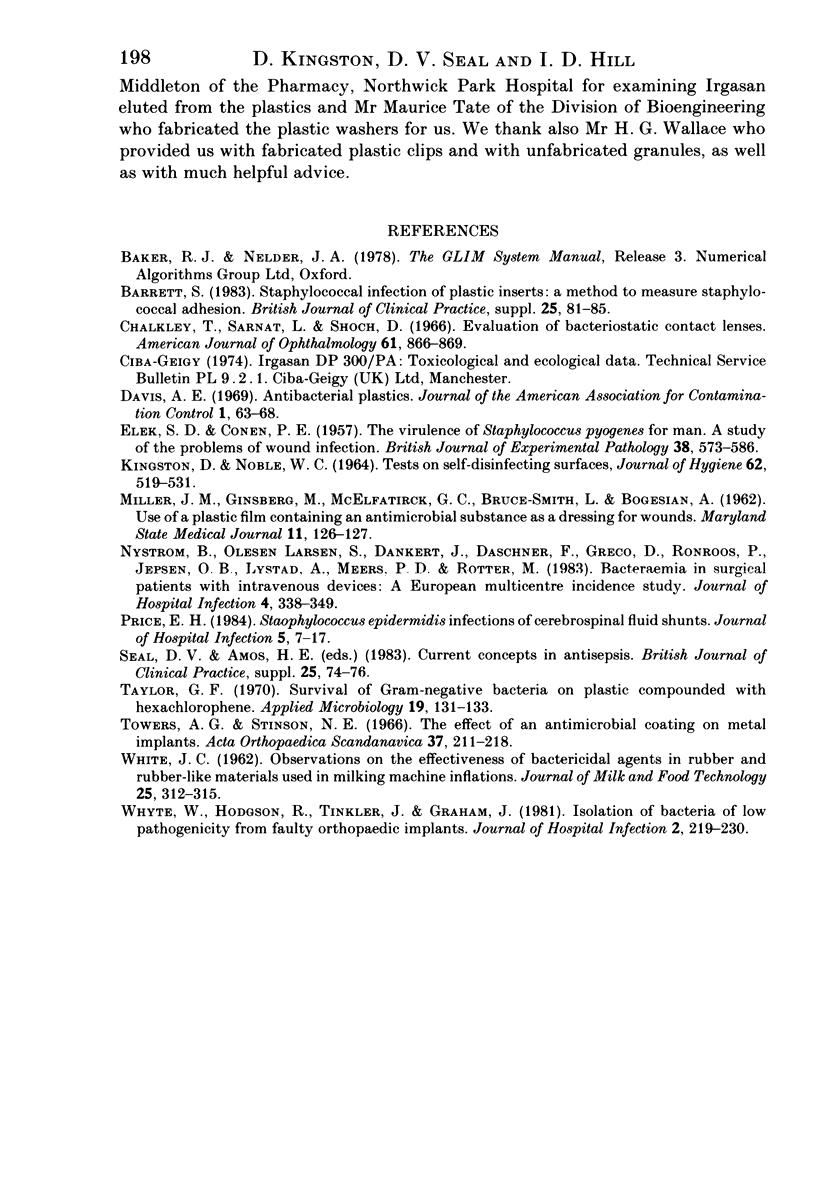
Images in this article
Selected References
These references are in PubMed. This may not be the complete list of references from this article.
- Chalkley T., Sarnat L., Shoch D. Evaluation of "bacteriostatic" contact lenses. A double-blind study. Am J Ophthalmol. 1966 May;61(5 Pt 1):866–869. [PubMed] [Google Scholar]
- ELEK S. D., CONEN P. E. The virulence of Staphylococcus pyogenes for man; a study of the problems of wound infection. Br J Exp Pathol. 1957 Dec;38(6):573–586. [PMC free article] [PubMed] [Google Scholar]
- KINGSTON D., NOBLE W. C. TESTS ON SELF-DISINFECTING SURFACES. J Hyg (Lond) 1964 Dec;62:519–531. doi: 10.1017/s0022172400040237. [DOI] [PMC free article] [PubMed] [Google Scholar]
- MILLER J. M., GINSBERG M., McELFATRICK G. C., SMITH L. B., BOGOSIAN A. Use of a plastic film containing an antimicrobial substance as a dressing for wounds. Md State Med J. 1962 Mar;11:126–127. [PubMed] [Google Scholar]
- Price E. H. Staphylococcus epidermidis infections of cerebrospinal fluid shunts. J Hosp Infect. 1984 Mar;5(1):7–17. doi: 10.1016/0195-6701(84)90096-3. [DOI] [PubMed] [Google Scholar]
- Taylor G. F. Survival of gram-negative bacteria on plastic compounded with hexachlorophene. Appl Microbiol. 1970 Jan;19(1):131–133. doi: 10.1128/am.19.1.131-133.1970. [DOI] [PMC free article] [PubMed] [Google Scholar]
- Towers A. G., Stinson N. E. The effect of an antimicrobial coating on metal implants. A pilot study in goats. Acta Orthop Scand. 1966;37(2):211–218. doi: 10.3109/17453676608993280. [DOI] [PubMed] [Google Scholar]
- Whyte W., Hodgson R., Tinkler J., Graham J. The isolation of bacteria of low pathogenicity from faulty orthopaedic implants. J Hosp Infect. 1981 Sep;2(3):219–230. doi: 10.1016/0195-6701(81)90041-4. [DOI] [PubMed] [Google Scholar]



